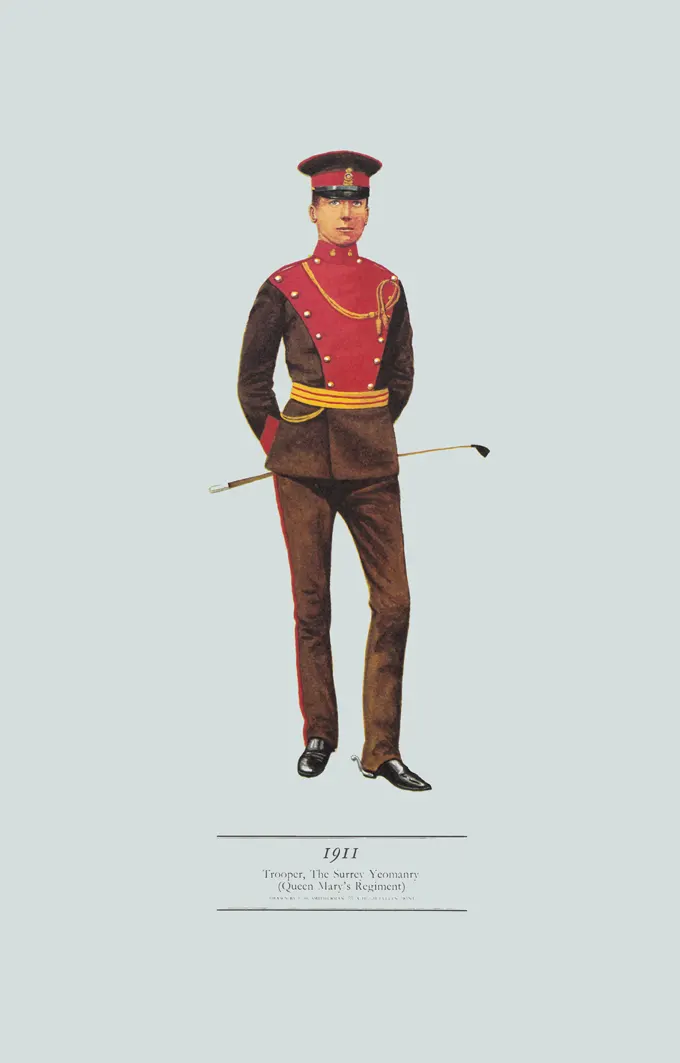Trooper, The Surrey Yeomanry (Queen Mary’s Regiment),1911
£12.50
The Surrey Imperial Yeomanry (1901) became Queen Mary’s 1910; (scroll down for a more detailed Description)
Published 1967 by © Hugh Evelyn Limited; drawn by Colonel Philip Henry Smitherman (1910-1982), Royal Corps of Signals
Size: c. 24.5 x 37.5cm [9 ½ ″ x 14 ½ ″] (may vary slightly from printers’ cut 50 years ago)
Printed on on medium cardstock weighing 144 g/sm2 faced in light greyish blue (RGB c. d5dede)
Print is STANDARD size – shipping is the same for 1 to 10 prints (based on largest print size in your order) – see Shipping & Returns
In stock
Description
Raised as the Surrey Gentlemen and Yeomanry Cavalry in 1794 it was disbanded in 1828. The Corps of Surrey Yeomanry was raised in 1831 and disbanded in 1848. The Surrey Imperial Yeomanry was raised in 1901 for the Second Boer War. Bestowed with the title Princess of Wales’s, this was changed to Queen Mary’s when George V became the King in 1910. From 1902 it was known as the Surrey (the Princess of Wales’²s) Imperial Yeomanry. In 1947 The Regiment was re-formed as the 298th (Surrey Yeomanry, Queen Mary’s) Field Regiment, Royal Artillery. It amalgamated with two other RA regiments to form 263rd (Surrey Yeomanry, Queen’s Mary’s) Field Regiment, RA in 1961. Disbanded in 1967 but reformed as a battery in 1969. April 1975, now a battalion, it amalgamated with the 7th (Volunteer) Battalion to form 6th/7th (Volunteer) Battalion but the Surrey yeomanry lineage was discontinued at that time. This trooper is wearing the uniform all yeomanry regiments should have adopted after the Boer war, but which few did. It is a smart and practical dress, but not as flamboyant as customary for yeomanry. It is a dress of lancer pattern with cap lines, although the regiment never wore the lance cap.
Source: Regimental photographs
Additional information
| Weight | 0.012 kg |
|---|---|
| Dimensions | 24 × 37 cm |





